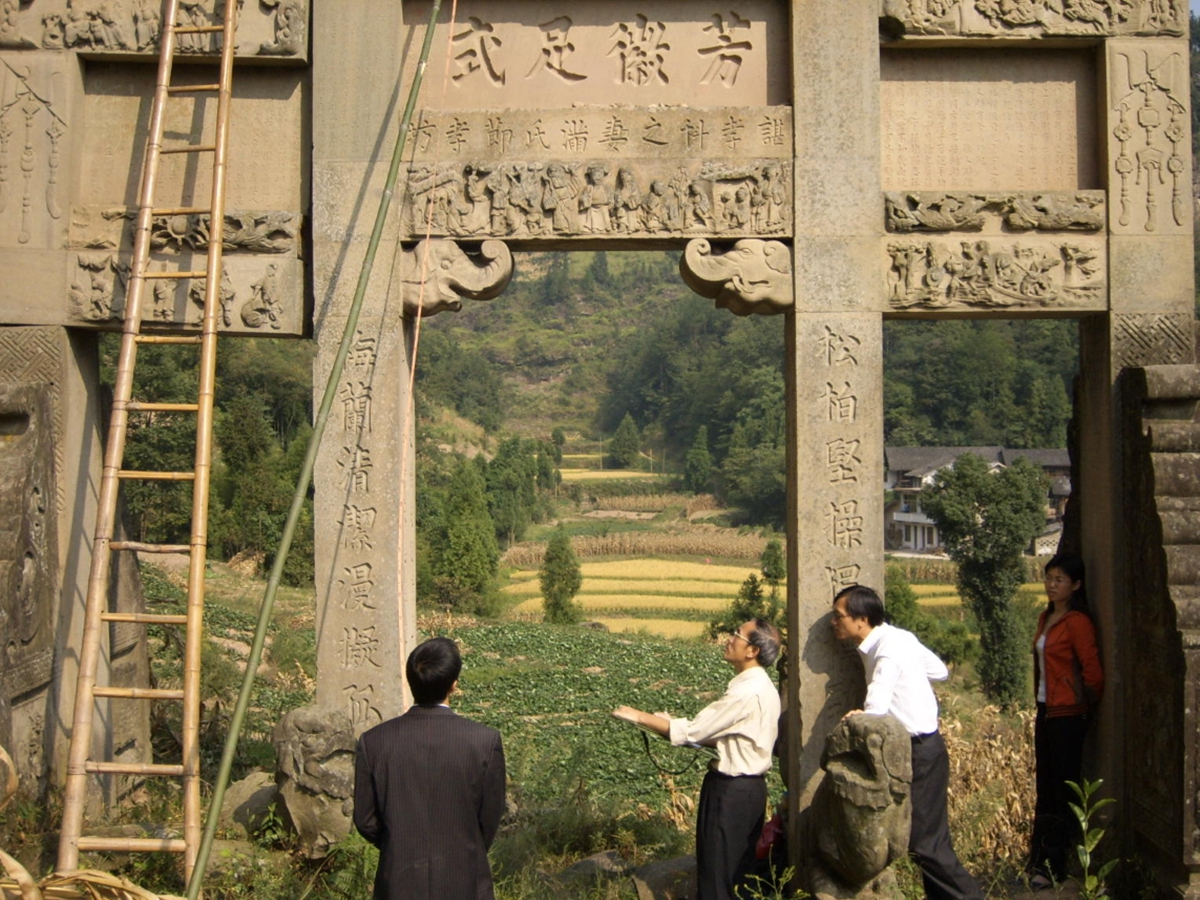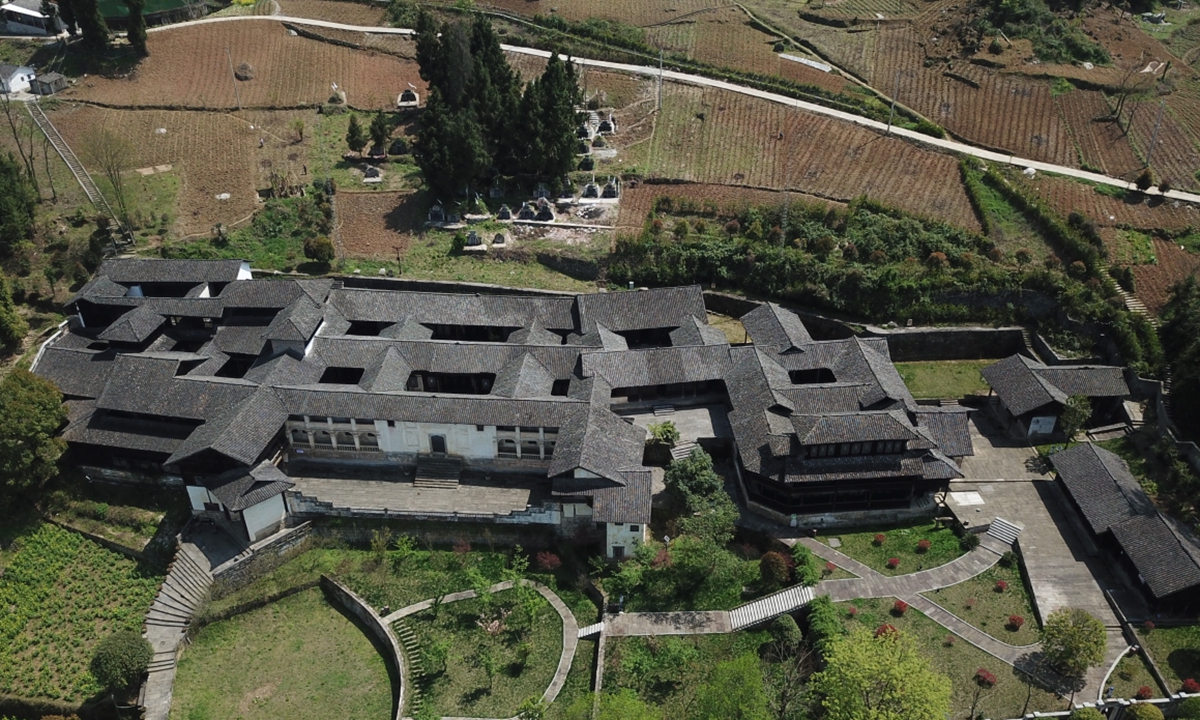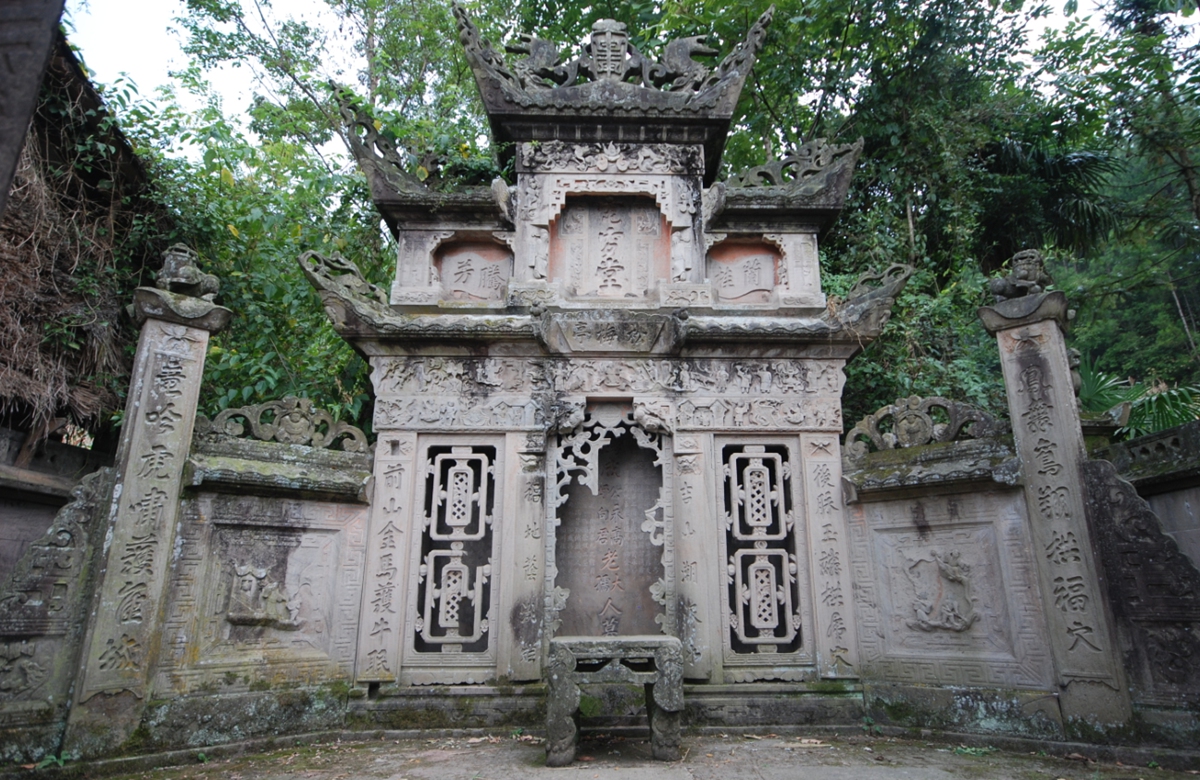
Sun Hui (left) and Sun Ru conduct on-site surveying and mapping at a traditional Chinese archway, in September 2007. Photo: Courtesy of Sun Ru
In Lichuan, Central China's Hubei Province, a family's unwavering dedication to preserving cultural heritage has become a beacon of inspiration. The Sun family, comprised of father Sun Hui and son Sun Ru, has been the backbone of the national cultural relics census in Lichuan since the 1970s, spanning the second to the fourth census, embodying the nation's spirit of protecting cultural treasures.
Noting the rapid advancement of technology in cultural relic surveys to the Global Times, the father and son duo also discussed increasingly standardized processes and the nation's growing emphasis on cultural endeavors. This work has also deeply bonded and profoundly influenced them.
In November 2023, the State Council, China's cabinet, announced in a notice the launch of the fourth census, which is aimed at establishing a comprehensive national registry and database of immovable cultural relics and building a dynamic management mechanism for these assets. Currently, the survey has entered the field investigation period across the whole country.

Dashuijing architecture group in Lichuan, Hubei Province Photo: Courtesy of the cultural heritage development center in Lichuan city, Hubei Province
Half-century dedicationDespite his advanced age and retirement, Sun Hui, the 75-year-old patriarch, who once served as the director of the cultural bureau in Lichuan, remained vibrant and enthusiastic as he introduced the history of the Dashuijing architecture group to Global Times reporter.
He proudly stated that he was the main contributor to the complex's designation as a 4A national level scenic area, a testament to his over 50 years of dedicated work in cultural preservation in his hometown.
The Dashuijing architecture group, located in Lichuan, is a unique blend of Tujia, Miao, and Han ethnic group architectural styles. Dating back to the late Ming (1368-1644) and early Qing (1644-1911) dynasties, the complex consists of one manor, residence, and one ancestral hall.
"Legend has it that it took the strength of 40 oxen to move the large stones for the manor's outer wall," Sun Hui recounted with relish.
He spoke with the ease of someone deeply connected to the subject, recounting the tales of when each structure was built, when and where renovations took place, and the stories behind each building.
Sun Hui wove these narratives with such familiarity that he seemed to transport himself and the reporters back to his youth, when he first became acquainted with these cultural relics.
Sun Hui, who graduated from Wuhan University with a bachelor's degree in archaeology, began his career in cultural work at the Dashuijing architecture group in 1973.
"At that time, many residents still lived in the manor. They knew I was working hard to apply for the 4A scenic area status, but when we failed at first, they stopped believing in me. I was quite frustrated," Sun Hui recalled, adding that he later went to Beijing for a month to follow up on the possibility, and eventually, he succeeded.
Sun Hui has two sons; besides Sun Ru, his younger son is also engaged in museum-related work in a museum in Hubei Province. Both sons have followed in their father's footsteps in the field of cultural preservation, inspired by his dedication and passion for the cause.
Currently, this veteran in cultural heritage protection remains active on the front lines, editing a book titled Lichuan City Intangible Cultural Heritage Series.
"I will continue to work until I am no longer able to get out of bed," he said.

A tombstone laid in Qing Dynasty in Yumu village, Lichuan, Hubei Province Photo: Courtesy of the cultural heritage development center in Lichuan city, Hubei Province
Carry on the elder's spirit
Accompanying the cultural heritage survey team to Yumu village, a well-preserved Tujia ethnic mountain village, for the fourth survey, the Global Times met Sun Ru who is the current director of the cultural heritage development center in Lichuan.
Sun Ru told the Global Times that he is well-acquainted with every household in Yumu, including who has left the village and the details of weddings and funerals.
The 53-year-old man is still at the forefront of cultural preservation. He said that he was deeply influenced by his father's work. After joining the workforce in the 1990s, he participated in the second national cultural relics census in 1991. The conditions for the survey were arduous; he was responsible for drawing images of cultural relics with pen and paper, and taught himself computer graphics.
"Back then, no one taught you exactly what to do; you learned on the job. I felt like an invincible warrior, capable of doing any task," Sun Ru joked.
At that time, there were no high-tech devices, and he had to borrow the only camera from the local cultural bureau to take precious black-and-white photos of these relics for record keeping.
Compared to the first survey, which only had simple textual descriptions, the second survey began to include black-and-white photos and accompanying text. Then, the third survey introduced GPS to locate the coordinates of cultural relics, supplemented with text, color photos, and drawings.
"By the time of the third survey, we had a dedicated vehicle for the cultural heritage survey," Sun Ru recalled.
Now, with the fourth survey, there is a multi-department collaboration with more staff support and technological innovation. Drones and Real Time Kinematic technology can pinpoint the coordinates of cultural relics to the nearest centimeter, reflecting the rapid development of the country's technology and its emphasis on cultural affairs.
"Some cultural relics are located on cliffs and steep slopes. Now, instead of climbing by hand, we can use drones to accurately collect data, which is very convenient and accurate," Sun Ru said.
He also humorously mentioned the "four natural enemies" he faced during field surveys, which are bees, ants, snakes, and insects.
"Fieldwork is like an adventure, with many shrubs and ditches in the county villages from which snakes are likely to appear," he said.
With a 30-year career in cultural preservation, Sun Ru expressed deep affection for his work and its value as "the roots of traditional culture are encapsulated in cultural relics."
"Resilience and unwavering commitment, these are the values I have always learnt from my father," he said.






